Relaxation Strategies for the Pelvic Floor
Article by Danielle Roberts
The pelvic floor is an important group of muscles that can significantly impact our quality of life when not functioning properly.

What is the role of the pelvic floor?
The pelvic floor has many responsibilities, including support of the pelvic organs, control of bowel and bladder function, and has a role in sexual function [1,2]. Relaxation of this muscle group is helpful for people suffering from pelvic pain and/or painful intercourse.
It is also helpful for individuals who are trying to strengthen their pelvic floor but carry a lot of tension here (think tight but weak muscles) [1,2]. Relaxation strategies can help restore normal resting tone to the pelvic floor musculature, which allows for better blood flow and decreased pressure on painful nerves [1,2,3].
Relaxation Strategies:
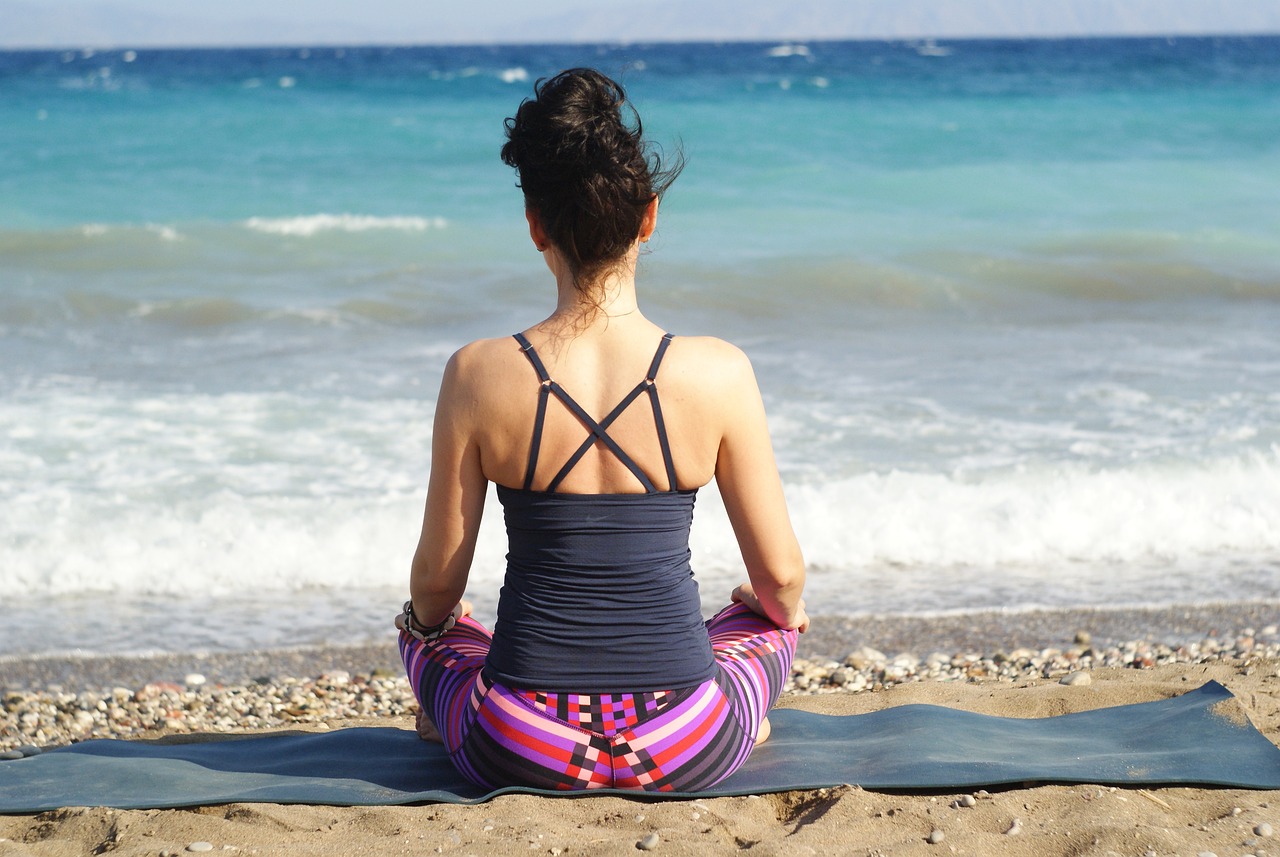
1. Diaphragmatic Breathing:
Diaphragmatic breathing, also known as belly breathing, is a deep breathing technique that incorporates your diaphragm and pelvic floor working together. Breathing exercises promote relaxation of both your core musculature along with the nervous system [1]. Diaphragmatic breathing is ideally performed in a comfortable resting position, i.e. lying on your back with pillows comfortably supporting your head and knees. Try putting your hands on your abdomen and focus on allowing these muscles to relax and expand as you inhale for a slow count of three. Imagine your pelvic floor descending into the pelvic bowl and relaxing with this breath. Exhale slowly through your mouth and feel your pelvic floor return to the resting position. Continue for at least ten breaths.
2. Stretching:
Stretching the muscles surrounding the pelvic floor is a helpful strategy to take tension off the pelvis and deepen the relaxation of the pelvic floor. Try diaphragmatic breathing in these poses and imagine your pelvic floor opening as you inhale.
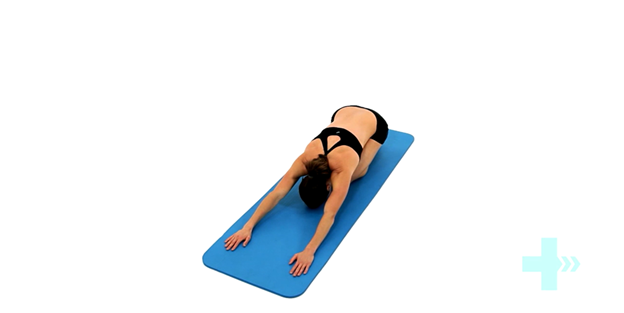
- Child’s Pose – starting on your hands and knees with your knees wider than your hips, gently drop your bottom towards your heels while stretching your arms out in front of you. Hold for 30 seconds.
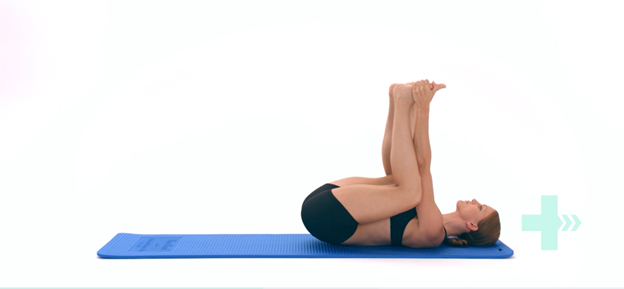
- Happy Baby Pose – starting on your back, bring your knees up towards your chest with your arms between your inner thighs. Reach towards your ankles or your feet as your knees come up towards your armpits. Use pillows or props to help provide support, if needed, so you can relax into this pose.
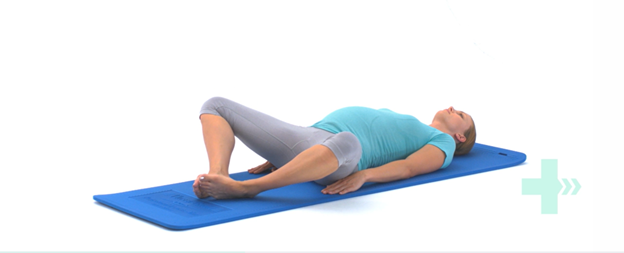
- Reclining Butterfly Pose – lying on your back, bend your knees and pull your heels up towards your bottom. Allow your knees to drop apart while keeping the soles of your feet pressed together. You should feel a stretch along your inner thighs. Use pillows or props to help provide support, if needed, so you can relax into this pose.

- Figure 4 Stretch – lying on your back, bend both your knees. Lift one leg and rest the outside of your ankle on the bent knee and allow the lifted leg to gently open to the side. You should feel a stretch into your gluteal muscles and the piriformis. To deepen this stretch, use your arms to lift the bent leg up towards your chest. Hold for 30 seconds
3. Heat:
Heat can be helpful for alleviating pelvic floor pain and tension. Mild heat applied over the external pelvic floor can help relax the muscles along with stimulate blood flow to the area [3]. Apply a warm pack or heating pad at a low heat setting for 15-20 minutes over a thin layer of clothing. Try while lying down with pillows under knees and practicing diaphragmatic breathing at the same time for a combined relaxation strategy!
References:
- 1. Faubion, S., Shuster, L., & Bharucha, A. (2012) Recognition and management of nonrelaxing pelvic floor dysfunction. Mayo Clinic Proceedings 87(2): 187-193.
- 2. Wallace, S., Miller, L., & Mishra, K. (2019) Pelvic floor physical therapy in the treatment of pelvic floor dysfunction in women. Current Opinion in Obstetrics and Gynecology 31(06):485-493.
- 3. Dodi, G. Bogoni, F. et al. (1986) Hot or cold in anal pain? A study of the changes in internal anal sphincter pressure profiles. Diseases of the Colon and Rectum 29(4):248-251.
You May Also Like...
-
 ArticleView Post
ArticleView PostCategorizing & Treating Neck Pain
It’s probably safe to say that we all have a pain in the neck from time to time. But what type of neck pain are you experiencing?
-
 ArticleView Post
ArticleView PostNeck Pain: Causes & Treatment
Have you ever woken up with a stiff or aching neck, unable to turn your head, thinking ‘where did that come from?’
-
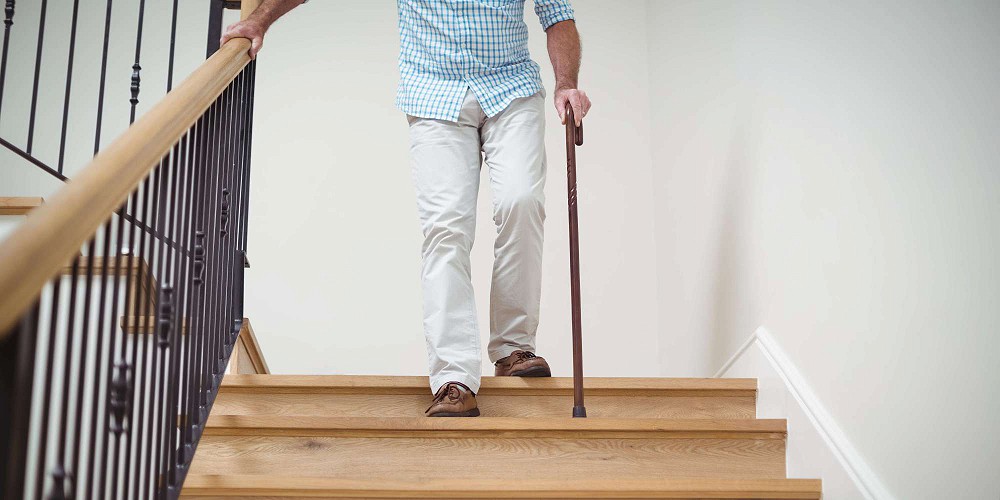 ArticleView Post
ArticleView PostLiving with Osteoporosis: What To Do For Better Bone Health
Osteoporosis is a disease characterized by low bone mass and deterioration of bone tissue, which can lead to increased risk of fracture.